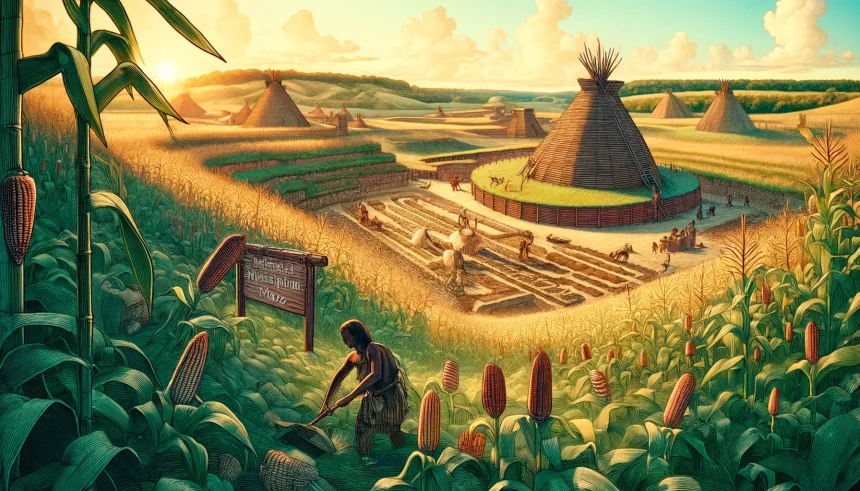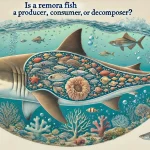The Mississippian culture, which flourished between 800 and 1600 CE, left behind a rich legacy of art, architecture, and agriculture, with maize (corn) being a central element of their daily lives. Maize was not just a food source but a fundamental part of the Mississippians’ economy, religion, and social structures.
The concept of animated Mississippian maize refers to the use of modern animation techniques to visualize how maize was cultivated, traded, and revered by these ancient people. Through animation, we can bring their agricultural practices to life, helping us understand the significant role maize played in their society.
Background on the Mississippian Culture
The Mississippian culture developed across the southeastern and midwestern United States, with notable urban centers like Cahokia, Moundville, and Etowah. The Mississippians built large ceremonial mounds and established complex societies with hierarchical leadership. They lived in chiefdoms, where power was often passed down through family lines. Their societies were highly organized, and their agricultural practices supported large populations.
The culture was also deeply spiritual, with religious rituals often intertwined with agricultural cycles. For the Mississippians, maize was more than just a staple food—it was considered sacred. It played a significant role in their ceremonies, art, and mythology. The association of maize with life, growth, and fertility made it central to their worldview.
Importance of Maize in Mississippian Society
Maize was the cornerstone of Mississippian agriculture, forming the basis of their diet. In addition to maize, the Mississippians grew beans and squash, referred to as the “Three Sisters” because they were often grown together. This farming technique supported both nutrition and ecological balance. The crops benefited from each other in various ways—maize provided a structure for the beans to climb, while beans enriched the soil with nitrogen and squash helped to suppress weeds.
The Mississippians practiced sophisticated farming techniques, including raised fields to prevent flooding and enhance soil fertility. They had a deep understanding of the land and utilized crop rotation to preserve the health of their soil. Harvesting maize was an important communal activity, often celebrated with festivals and ceremonies. It was also a symbol of abundance and prosperity.
Maize wasn’t just important for sustenance; it also became a major trade commodity. As the Mississippian culture expanded, the exchange of maize and other agricultural goods with neighboring cultures became central to their economic system. Archaeological evidence suggests that Mississippian maize was traded as far as the Great Lakes and the Gulf of Mexico, showcasing its importance in regional trade networks.
The Concept of Animated Mississippian Maize
Animation brings a historical and cultural subject like Mississippian maize to life by visualizing how it was grown, harvested, and revered in the ancient world. These animations can serve as educational tools, helping to bridge the gap between ancient practices and modern understanding.
Historical Reconstructions
Through animations, we can depict the daily activities of Mississippian farmers. These may include scenes of planting maize in mounds, using tools to harvest it, and the methods they employed to store it for the winter. Historical animations can also recreate entire farming landscapes, showing how maize fields were integrated into Mississippian villages.
Mythological Storytelling
Many indigenous cultures, including the Mississippians, connected their agricultural practices to mythology and religion. Animated representations can bring these stories to life, showing how maize was considered a gift from the gods and how it featured in creation myths. These animated stories could depict deities associated with agriculture or personify maize itself, bringing a deeper understanding of its spiritual significance.
Archaeological Interpretations
Animations can be used to explain the archaeological findings related to maize. For example, maize kernels found in pottery or in the graves of prominent individuals might be visually interpreted in an animation. This helps viewers understand how maize was not only a staple food but also a symbolic object used in rituals and burials.
Techniques Used in Animation
Creating animations about Mississippian maize involves a variety of techniques, each serving a different educational purpose. Here are the main approaches used in these animations:
2D Animation
This style uses simple drawings or digital illustrations to depict key events or aspects of maize cultivation. It is often used for short educational clips or children’s books. In this format, we can show step-by-step processes such as planting maize, irrigating fields, or harvesting, in a visually engaging and straightforward manner.
3D Animation
More complex and detailed animations often use 3D modeling to bring the Mississippian world to life. These animations can simulate the look and feel of actual maize fields, complete with realistic textures and environmental details. 3D animation can also recreate the landscape of ancient Mississippian villages, showcasing the interaction between the people and their maize crops. These animations provide a more immersive experience, allowing viewers to walk through ancient environments and understand the scale and scope of Mississippian agricultural practices.
Motion Graphics
This type of animation is often used for data visualization, explaining concepts like crop rotation, trade routes, or the nutritional benefits of the Three Sisters. Motion graphics can break down complex processes into digestible visual chunks, making it easier for audiences to understand intricate systems like Mississippian agriculture.
Cultural and Educational Impact
The animation of Mississippian maize has significant cultural and educational value. Through animated representations, people can learn not just about ancient farming techniques but also about the broader Mississippian culture.
Teaching History
Animations can provide a dynamic and engaging way to teach history, especially for younger audiences. Students can visually experience how people in ancient North America lived, worked, and interacted with the environment. By understanding the importance of maize in Mississippian culture, students gain a deeper appreciation for the sophistication of indigenous societies.
Museum and Documentary Use
Many museums and cultural institutions use animations to bring exhibits to life. Animations can enhance museum displays by providing visual context for artifacts, such as maize kernels found in burial sites or the tools used for farming. Documentaries about the Mississippian culture can also use animation to reconstruct historical events, showing the daily lives of people who lived thousands of years ago.
Digital Storytelling
With the rise of online educational platforms and streaming services, animations of Mississippian maize are now available to a global audience. Digital storytelling allows for the wide dissemination of knowledge about indigenous cultures and their agricultural practices, fostering a broader understanding of North America’s pre-Columbian history.
Potential Challenges in Animation
While the use of animation is a powerful tool for historical education, there are challenges involved in accurately depicting ancient cultures and practices.
Accuracy
One of the biggest hurdles in creating historical animations is ensuring accuracy. Animators must rely on archaeological evidence, historical texts, and expert consultation to depict ancient agricultural methods and spiritual practices as faithfully as possible. Mistakes in representation could distort our understanding of the Mississippian culture.
Artistic Interpretation
Animations offer a degree of artistic freedom, which can sometimes conflict with historical accuracy. While artistic interpretations can make stories more engaging, they need to be carefully balanced with factual representation. Too much creative liberty could lead to misrepresentation of the Mississippian people and their practices.
Technical Limitations
High-quality animation requires significant resources, including skilled animators, specialized software, and time. The cost of producing detailed, historically accurate animations can be prohibitive for some institutions or projects, limiting their availability to broader audiences.
Conclusion
Animated Mississippian maize is a unique and valuable tool for both historical education and cultural preservation. By bringing to life the agricultural practices of the Mississippian culture, these animations offer a deeper understanding of how maize was central to their society. As technology continues to advance, the ability to create immersive and accurate animations will help future generations connect with the past, providing an engaging way to explore the rich agricultural heritage of Native American cultures. Through animation, we can continue to celebrate and learn from the innovations and traditions of the Mississippians, ensuring their story is shared with audiences around the world.













